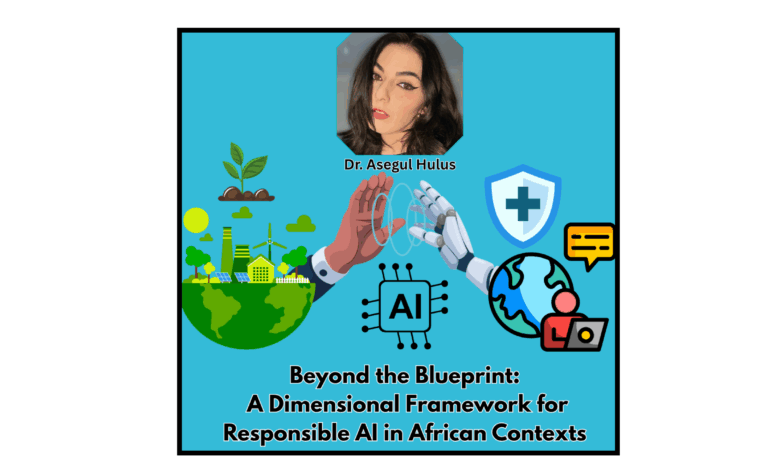
Artificial Intelligence (AI) is no longer confined to well-resourced labs or tech powerhouses. It’s reaching the regions where it can have the greatest impact-places where improved access to healthcare, agricultural support, environmental data, and language tools can transform lives. But deploying AI systems in such contexts isn’t just a matter of coding; it’s about understanding constraints, crafting tailored strategies, and engineering for resilience.
This article introduces the Dimensional AI Implementation Framework-a practical model developed through the analysis of AI deployments across African countries. By reviewing dozens of projects and conducting an in-depth analysis of four representative case studies-spanning health diagnostics, agriculture, environmental monitoring, and language processing-I identified six critical dimensions that consistently shaped successful AI integration in resource-limited environments.
Why a Purpose-Built Framework Matters
AI systems often falter when applied outside of high-resource settings. Generic models can fail in rural clinics, disconnected regions, or areas with limited computing infrastructure. Despite their potential, many AI systems break down when faced with operational realities. This framework bridges that gap by combining empirical insight with design principles suited for real-world deployment.
The Six Dimensions of Successful AI Implementation
1. Context-Aware Problem Definition Every effective deployment began with a deep understanding of the local context. For instance, a cervical cancer screening tool succeeded because it addressed specific diagnostic
workflows and patient volumes in rural Uganda, rather than relying on assumptions from well-equipped health systems.
2. Data Systems Architecture Rather than relying on perfect datasets, effective implementations embraced flexible and reliable data collection systems. This included mobile data entry, hybrid cloud synchronization, and low-bandwidth strategies. Data governance and privacy were also prioritized despite infrastructure limitations.
3. Model Development under Constraint Lightweight and efficient models outperformed complex architectures when computational resources were limited. Projects used transfer learning, model pruning, and optimization techniques to ensure performance without sacrificing feasibility.
4. Field-Ready Deployment Strategies Deployments were designed with hardware limitations, offline usage, and local technical capacity in mind. Whether leveraging mobile phones, solar-powered edge devices, or hybrid cloud models, robust field integration proved critical.
5. Feedback Mechanisms and Iteration Adaptive systems gathered user feedback through dashboards, surveys, and usage analytics. This allowed developers to refine outputs, retrain models, and address evolving user needs.
6. Impact Measurement and Evaluation
Success was tracked through both quantitative and qualitative measures. From clinical outcomes and crop yield improvements to user satisfaction and language preservation, effective projects incorporated robust evaluation protocols from the outset.
Four Stories from the Field
Healthcare: Portable diagnostic systems improved early cervical cancer screening by pairing custom AI models with local medical workflows.
Agriculture: Farmers used mobile-based image recognition tools to detect crop disease, even in low-connectivity environments.
Environment: Community-driven air quality monitoring systems collected and analyzed urban pollution data, providing real-time alerts and evidence-based policy input.
Language Processing: Low-resource NLP tools enabled speech recognition and translation for underrepresented African languages by leveraging transfer learning and community validation.
Key Takeaways for Practitioners
Deploying AI in Africa-and other under-resourced regions-requires more than technical innovation. It demands humility, adaptability, and a willingness to co-create with communities. The Dimensional AI Implementation Framework provides a practical guide to doing just that.
This isn’t just a blueprint for engineers. It’s a roadmap for policymakers, nonprofits, research labs, and private companies aiming to ensure that AI solutions deliver meaningful, measurable, and sustainable value.





